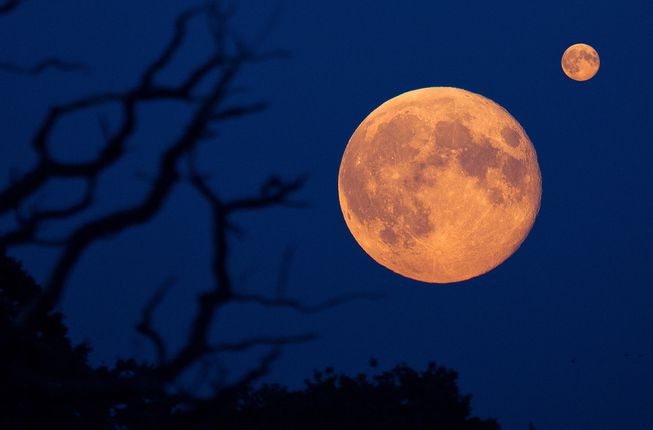Mars-Sized Planet Created The Moon After Impacting With Earth, But Can Our Moon Have Submoons?

In theory, a Mars-sized planet created the Moon after impacting with Earth, while a more recently hypothesis said that life on Earth also emerged thanks to that collision. However, in another study, scientists say that our Moon might have submoons. Even more, three other moons in the solar system and one beyond it can have their own natural satellites.
“Planets orbit stars and moons orbit planets, so it was natural to ask if smaller moons could orbit larger ones,” said Dr. Sean Raymond, from the University of Bordeaux, the leading author of the new study.
According to Dr. Raymond and his co-author, Dr. Juna Kollmeier, submoons can only exist and survive around big moons with broad orbits around their host planets. Theoretically, our Moon, as well as Callisto, Titan, and Iapetus, among others, can have their own moons. Between them, “Callisto fits the bill of a satellite that could host its own satellite, although none have been found so far,” according to the new study.
Can Our Moon Have Submoons Due To the Impact Of Earth With The Mars-sized Planet That Brought Life On Earth?
“Further calculations are needed to address possible sources of submoons instability, such as the non-uniform concentration of mass in our Moon’s crust. The lack of known submoons in our Solar System, even orbiting around moons that could theoretically support such objects, can offer us clues about how our own and neighboring planets formed, about which there are still many outstanding questions,” Dr. Kollmeier explained.
While the before-mentioned moons of Jupiter and Saturn emerged from the disk of gas and dust that surrounded these gas giants in the last stage of their formation, our Moon is thought to have formed due to an impact between Earth and a Mars-sized planet, the same one that brought life on Earth, according to a more recent hypothesis.
However, the US space agency plans on creating a “fake submoon” because “an artificial submoon may be stable and thereby serve as a time capsule or outpost. On a stable orbit around the Moon – such as the one for NASA’s proposed Lunar Gateway – a submoon would keep humanity’s treasures safe for posterity long after Earth became unsuitable for life,” the researchers concluded.
0 comments